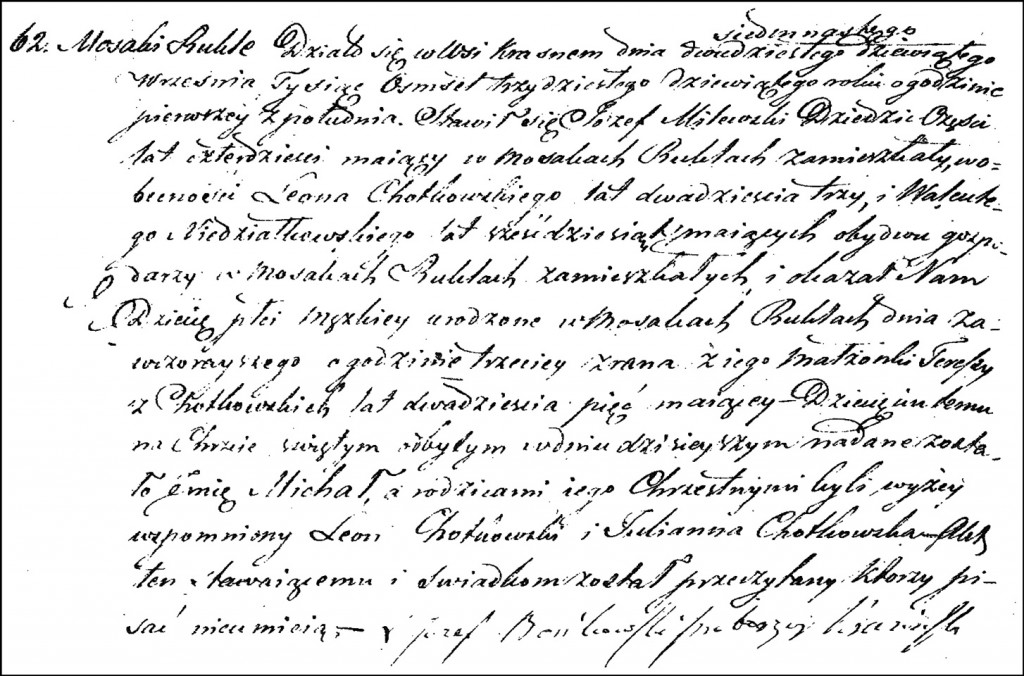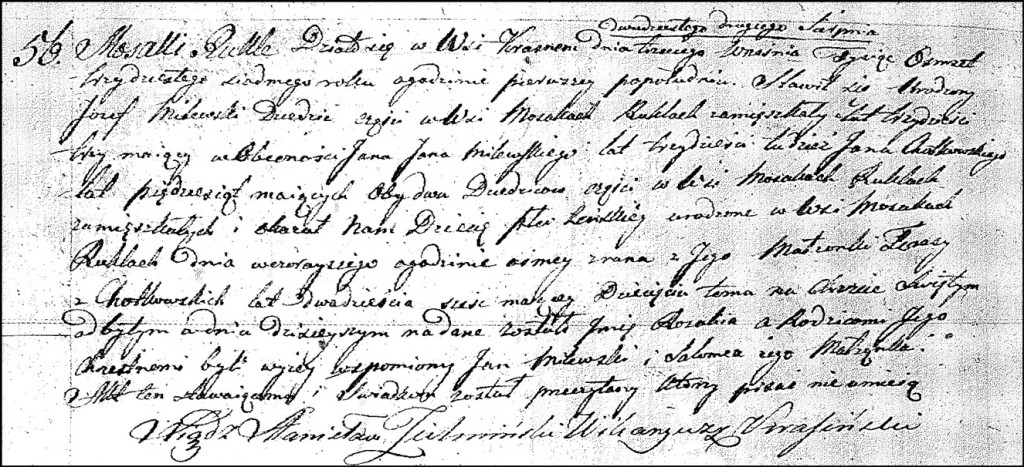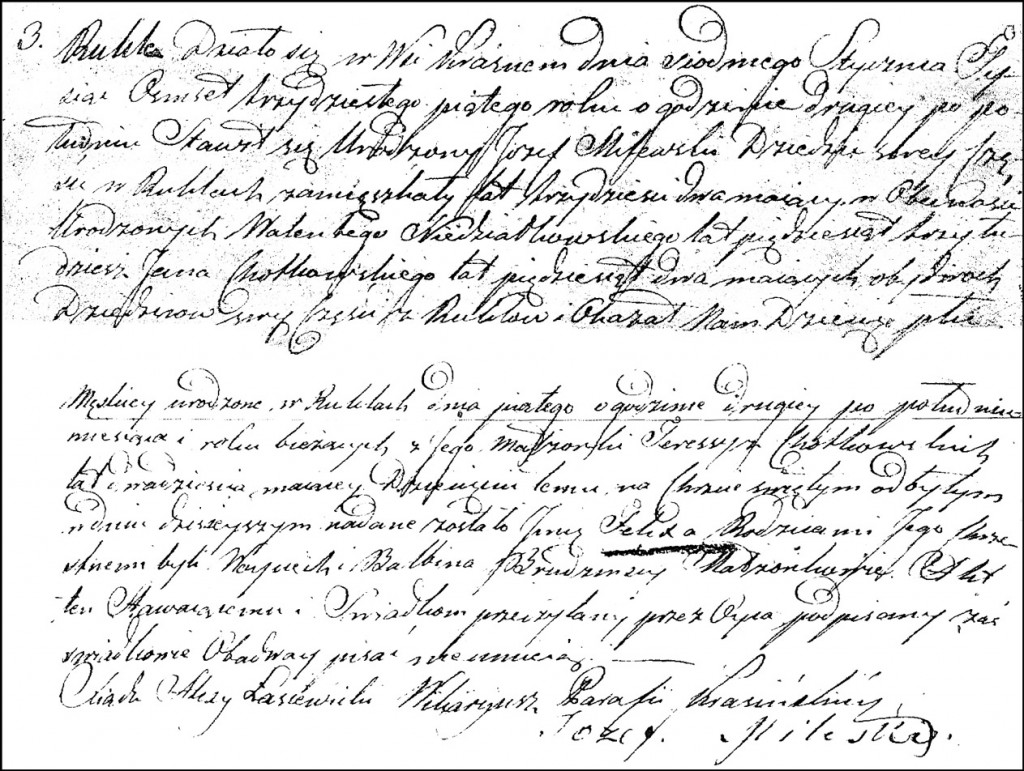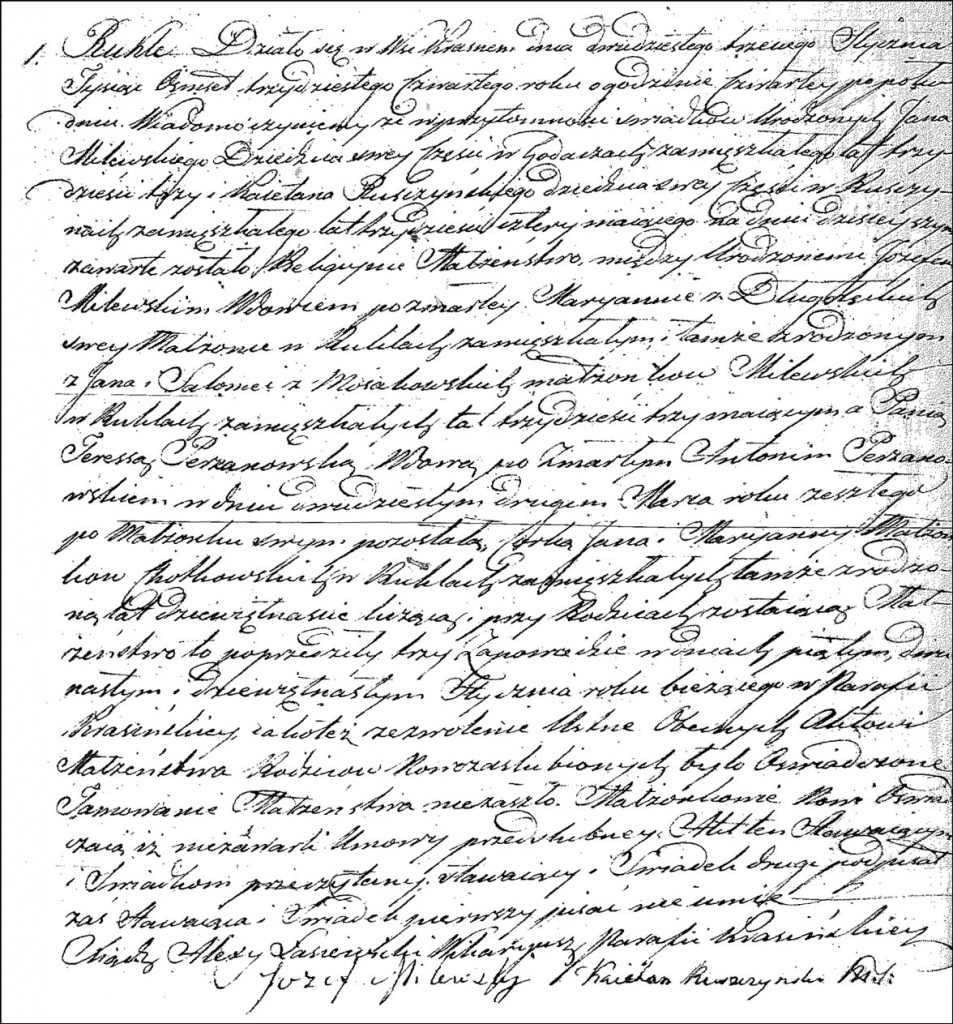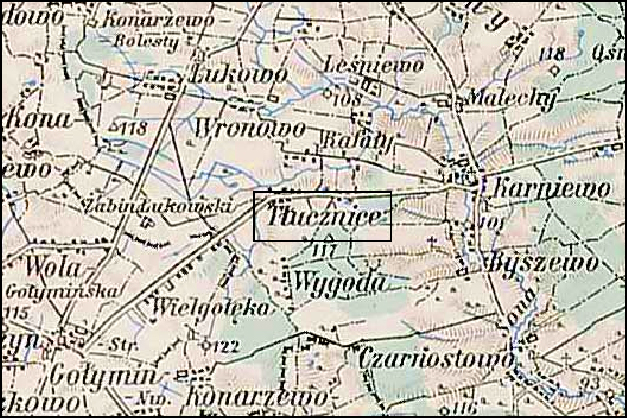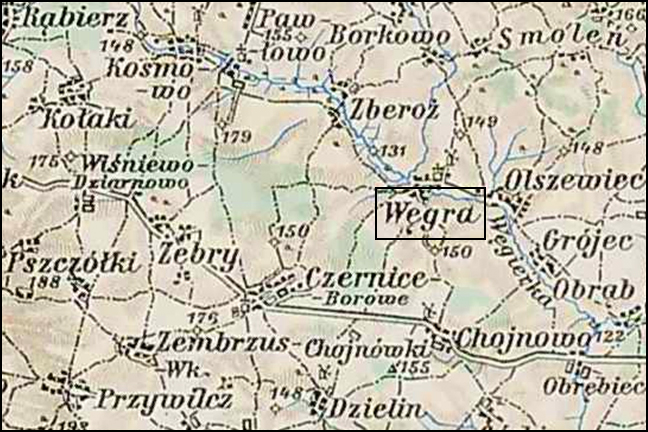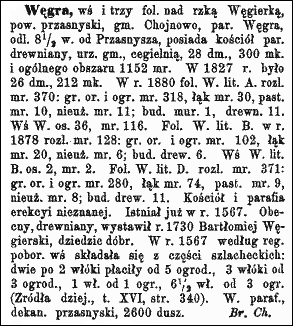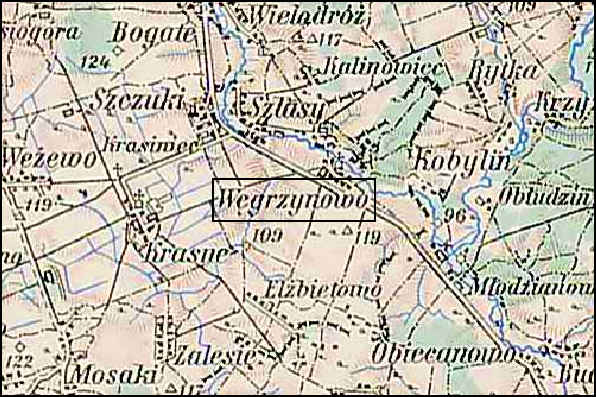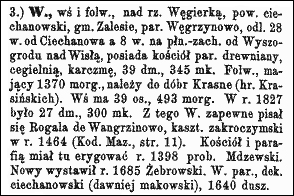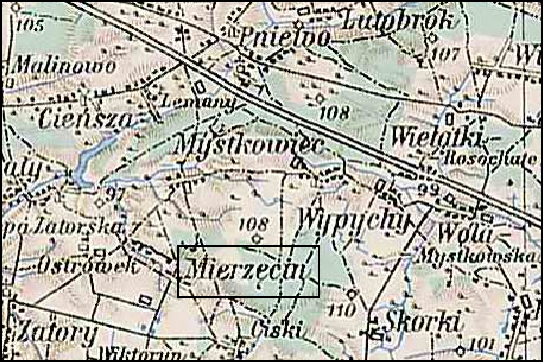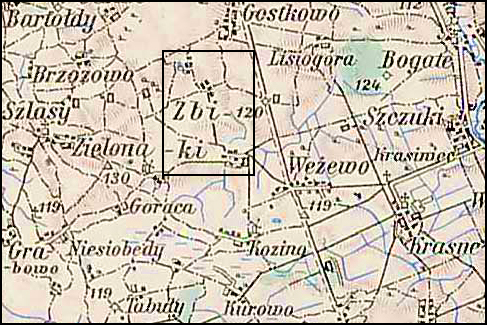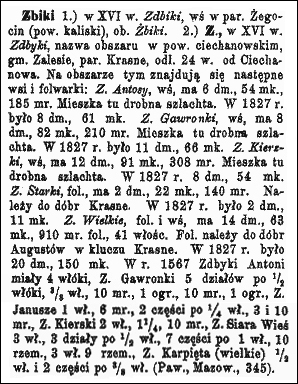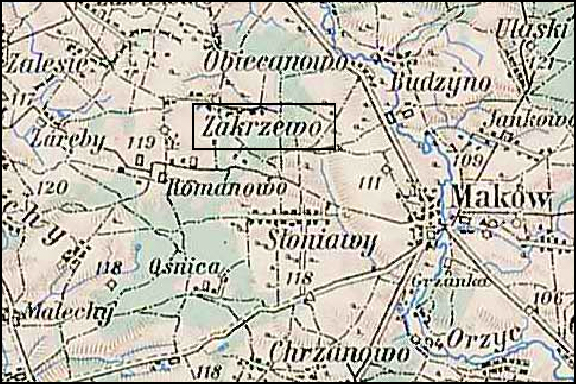Michał Milewski, son of Józef Milewski and Teresa Chodkowska, was born on 28 September 1839 in Mosaki Rukle, Przasnysz Obwód, Płock Gubernia, Congress Kingdom of Poland. He was baptized in the parish church in Krasne, Przasnysz Obwód, Płock Gubernia, Congress Kingdom of Poland on 29 September 1839.
The Birth and Baptismal Record of Michał Milewski – 1839
SOURCE: Parafia pw. św. Jana Chrzciciela (Krasne, Przasnysz Obwód, Płock Gubernia, Congress Kingdom of Poland), “Akta urodzeń, małżeństw, zgonów 1826-1840 [Records of Births, Marriages, and Deaths 1826-1840],” page 24, entry 62, Michał Milewski, 29 Sep 1839; filmed as Kopie księg metrykalnych, 1808-1892; FHL INTL microfilm 0,702,793.
Click on the image above to view a higher resolution image. Click on the link for a PDF copy of the Birth and Baptismal Record of Michał Milewski. Translated from the Polish, the record reads:
62. Mosaki Rukle This happened in the village of Krasne on the seventeenth / twenty-ninth day of September in the year one-thousand eight-hundred thirty-nine at the hour of one in the afternoon. There appeared Józef Milewski, owner of a part [of the village], forty years of age and residing in Mosaki Rukle, in the presence of Leon Chodkowski, twenty-three years of age, and Walenty Niedziałkowski, sixty years of age, both farmers residing in Mosaki Rukle, and he showed Us a child of the male sex born in Mosaki Rukle yesterday at the hour of three in the morning of his wife Teresa née Chodkowska, twenty-five years of age. To this child at Holy Baptism performed on this day was given the name Michał, and his godparents were the afore-mentioned Leon Chodkowski and Julianna Chodkowska. This document was read aloud to the declarants and witnesses who do not know how to write.
         [signed] The Reverend Józef Bońkowski, Pastor of Krasne
As seen in several other birth and baptismal records, although Józef Milewski was able to sign his name (as documented in the birth and baptismal record of his son Felix born in 1835, and in his own marriage record from 1835), the priest wrote that none of the declarants or witnesses knew how to write.
Michał Milewski was my 3rd cousin 3X removed.
Copyright © 2010 by Stephen J. Danko

